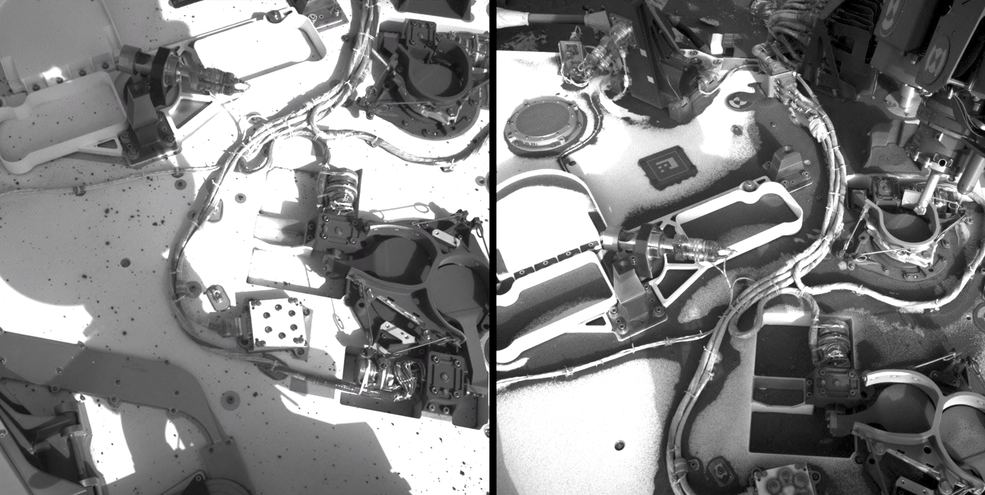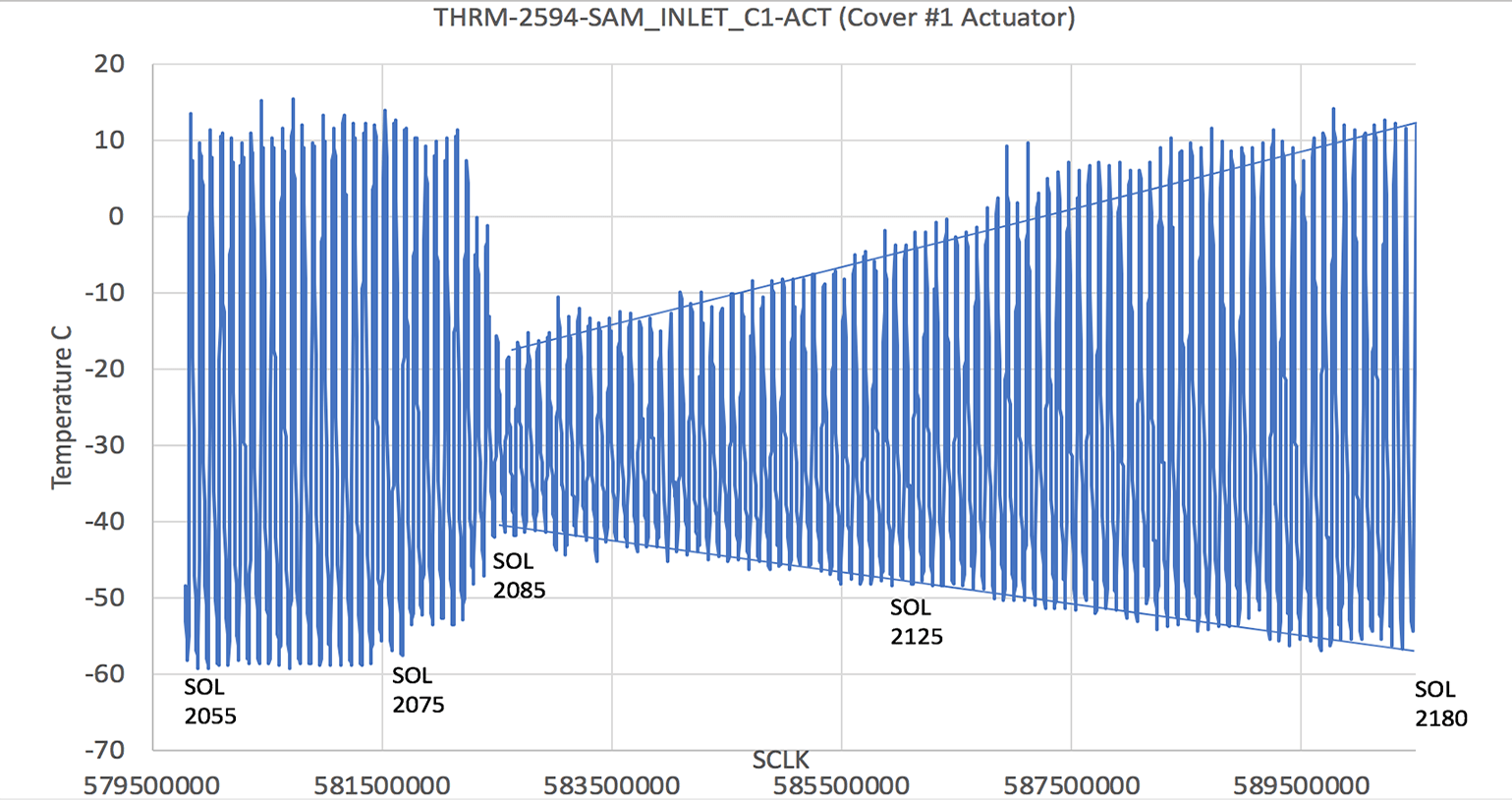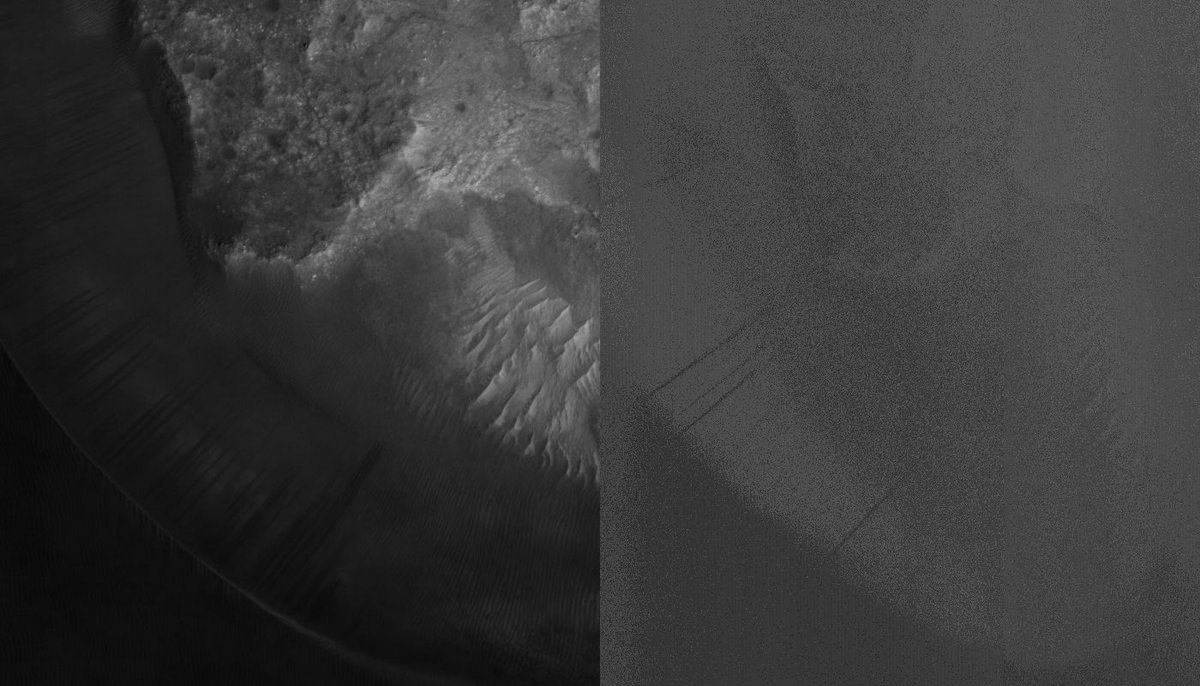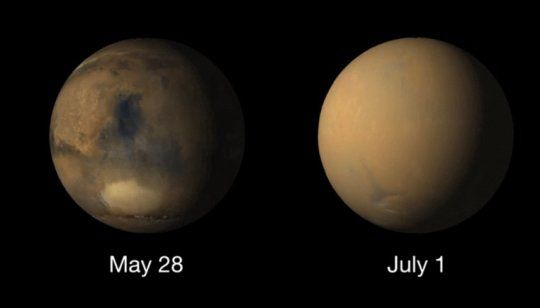A tiny electric motor on the Curiosity rover played a role in identifying a global Martian dust storm. The storm completely enveloped the planet between May and July, 2018. It was the biggest storm since 2007.
Humanity has a lot of electronic eyeballs on Mars. We routinely point terrestrial telescopes and space telescopes at the planet. And there are six spacecraft orbiting Mars, not to mention the rovers on the surface. So there were no shortage of observations of the recent storm.
The first evidence of the global dust storm appeared near the Perseverance Valley, close to where the Opportunity rover is working. The Mars Reconnaissance Orbiter (MRO) spotted the growing storm in that area on May 30th. Opportunity is solar powered, so its science operations were shut down on June 8th to prepare for the storm.

A few days prior to that, on June 5th, evidence grew on the other side of the planet that the storm was growing. This was near Gale Crater, where the MSL Curiosity was working. But it wasn’t observations that revealed the growing reach of the storm. It was a tiny actuator, or motor.
The motor has a particular job to do on Curiosity. It powers a lid to a funnel that takes in samples of powdered Martian rock dropped in by Curiosity’s drill. Those samples are then chemically analyzed by SAM, the Sample Analysis at Mars chemistry lab.
This video from NASA’s clean room at the Jet Propulsion Laboratory shows the actuator, funnel, and arm in operation.
Curiosity’s status on the surface of Mars is monitored in meticulous detail. The temperature of the actuator in question is monitored continuously. It is exposed to the Martian climate, and its temperature began to drop.
“All my charts showed the dust storm effect on the actuator because it’s exposed; it’s sitting out there on the rover deck,” said Benito Prats, an electromechanical at Goddard Space Flight Center. “All of a sudden, I saw the daytime temperature drop really quickly.”
The dust storm was growing in intensity and blocking out the Sun, making the temperature drop. As Martian night came, Prats saw the opposite occur: the temperature began to rise. This is because the warmer, dustier atmosphere heats the ground.
Of course Curiosity doesn’t rely on actuator readings to measure the weather. It has specific instruments for that. The Rover Environmental Monitoring Station (REMS), which measures air temperature, atmospheric pressure, and other environmental conditions, was also beginning to indicate accumulating dust.
Curiosity is better suited to withstand storms of this magnitude than Opportunity is. Curiosity isn’t solar-powered; it’s powered by a plutonium generator. It can keep working through dust storms. It also has back up sample funnels in case one gets clogged.
Prats didn’t stop with his actuator temperature readings. He combined those readings with historic actuator temperature averages to estimate when the dust storm would abate. “At sol 2,125 (July 28), I noticed a linear trend,” he said, “so I said OK, I can predict that sol 2,180 (Sept. 23) is going to be when we’re going to get out of the dust storm and the temperature will return back to normal, though I later updated that to sol 2,175 (Sept. 18).”
His prediction was consistent with more formal ones. They matched recent actuator temperature readings, which were back to normal around Sept. 18, indicating that the dust over Gale Crater had settled by then. A majority of the dust also has settled at Perseverance Valley. The global Martian dust storm was abating.

This is useful data, though it comes from an unexpected source. There are lots of dust storms on Mars but we still don’t know why some of them last for months and grow massive, while others stay small and last only a week. Prat’s data will help future forecasts, which need to be more reliable to help with future mission design.
“There are some things about Mars that make it more predictable and some that make it less so than Earth,” said Scott D. Guzewich, a Goddard atmospheric scientist leading Curiosity’s dust storm investigation.
“I can estimate, two years in advance, the temperature, air pressure, and whether there’s going to be dust or clouds in the air during the non-dusty season anywhere on the planet,” he said. “But during the dusty season, in locations that have dust storms, I can’t give you any prediction at all that there will be a dust storm on one day and not another.”
The global Martian dust storm is still raging. Images from the HiRISE camera on the MRO show the power of the storm.

Opportunity hasn’t been heard from for 120 Sols. The global Martian dust storm is subsiding, but still no word from Opportunity. NASA expects that it has experienced a low-power fault. There may be other faults as well.
Opportunity has lasted far, far, longer than anyone expected. If this is the end of the mission, Opportunity doesn’t owe us anything. But it would still be hard to finally acknowledge that it’s over.
Fingers crossed.
Sources
- NASA Press Release: “How a Tiny Curiosity Motor Identified a Massive Martian Dust Storm“
- University of Arizona HiRise: “Martian Haze“
- Universe Today: “NASA Spots Opportunity as the Dust Storm Clears. Still No Word From Her Though“

